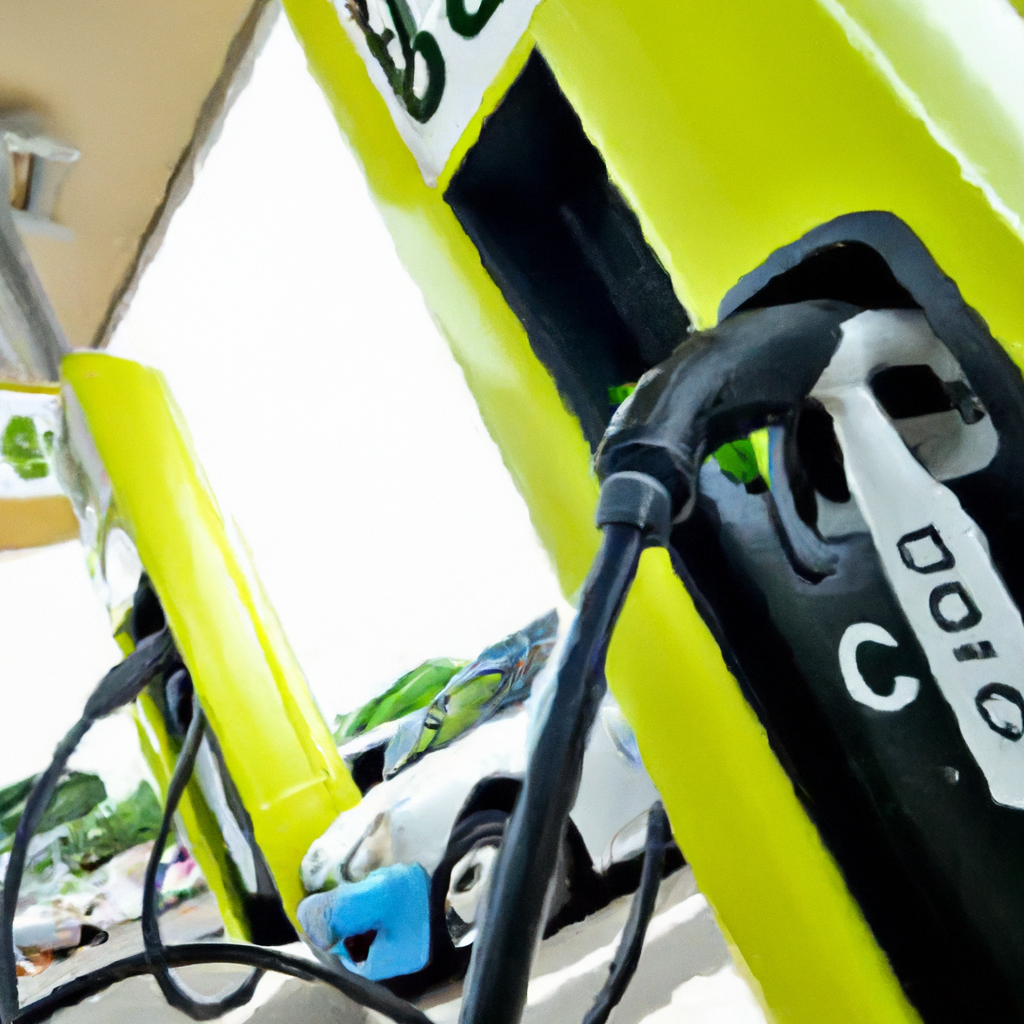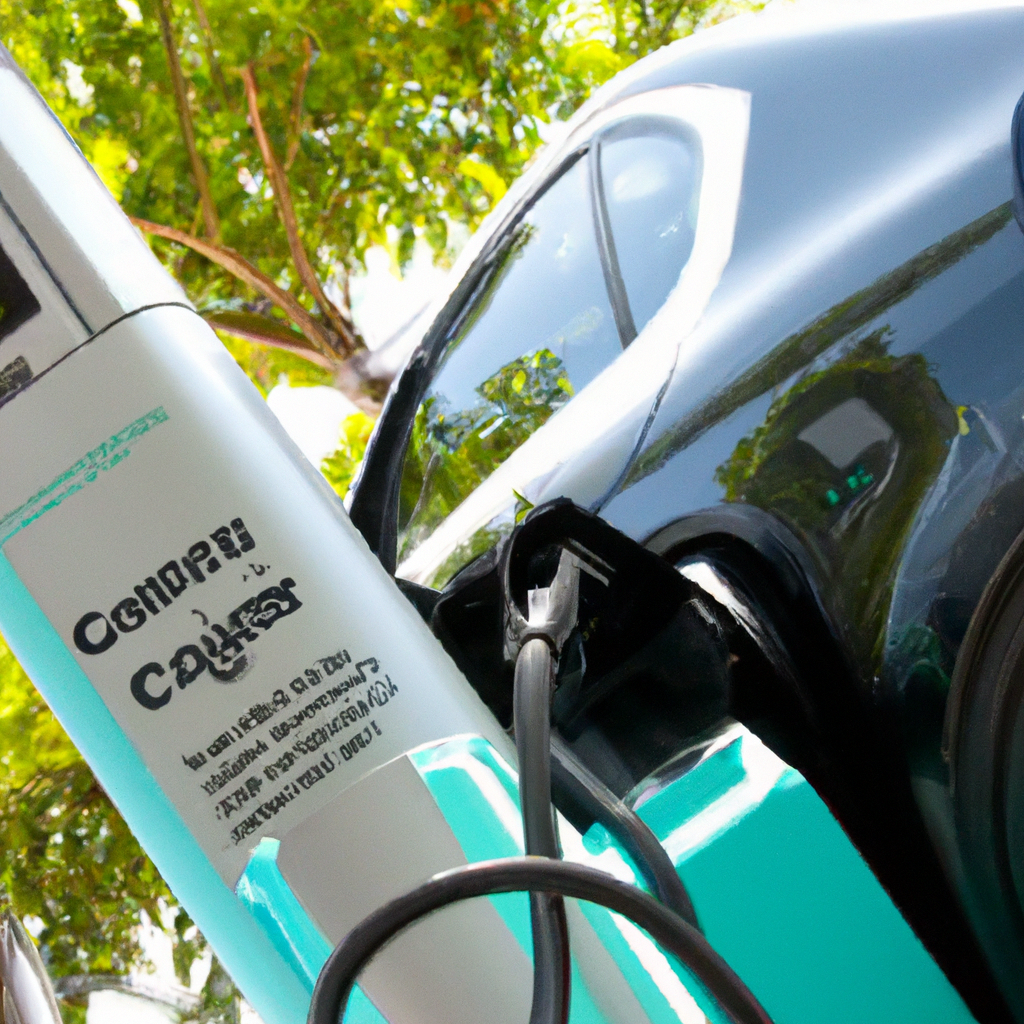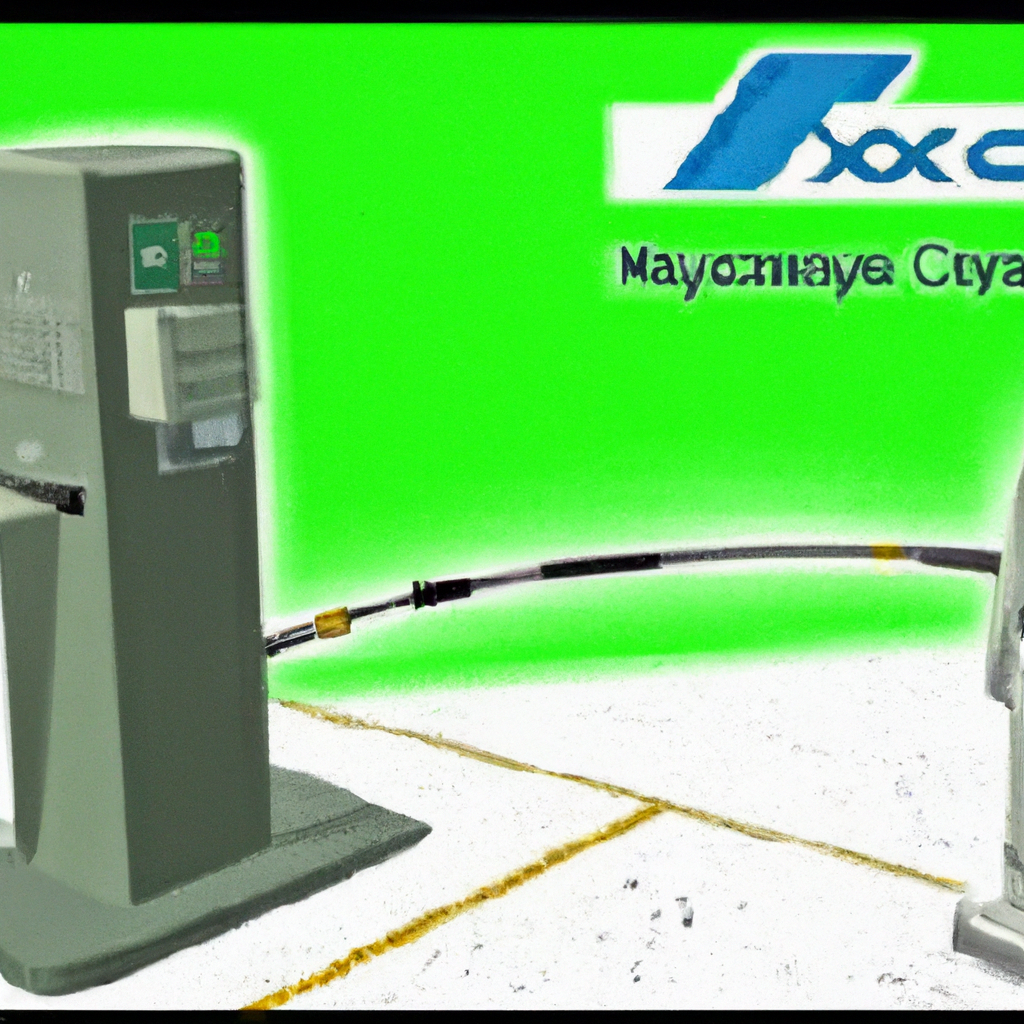How Does EV Charging Infrastructure Contribute To Malaysia’s Carbon Reduction Goals?
October 25, 2023 | by Jacob Kang

Have you ever wondered how EV charging infrastructure plays a vital role in helping Malaysia achieve its carbon reduction goals? In this article, we will explore the direct impact of EV charging stations on carbon emissions, as well as the potential benefits it brings to the environment. As an expert in EV charging, you will discover how this infrastructure contributes to reducing Malaysia’s carbon footprint and be captivated by the compelling evidence that highlights its significance. Join us as we delve into the world of EV charging and its crucial role in Malaysia’s sustainable future.

Benefits of EV Charging Infrastructure for Carbon Reduction
Reducing Carbon Emissions
EV charging infrastructure plays a crucial role in reducing carbon emissions and tackling climate change. By encouraging the adoption of electric vehicles, the transportation sector, which contributes significantly to carbon emissions, can be transformed. With the shift from traditional combustion engine vehicles to electric vehicles, there is a significant reduction in greenhouse gas emissions such as carbon dioxide, nitrogen oxides, and particulate matter.
Electric vehicles produce zero tailpipe emissions, unlike their fossil fuel counterparts. This means that by promoting the use of electric vehicles and supporting the development of a robust charging infrastructure, we can make significant strides towards achieving our carbon reduction goals.
Transition to Clean Energy
EV charging infrastructure also supports the transition to clean energy sources. As we aim to move away from relying on fossil fuels, electric vehicles provide an opportunity to integrate renewable energy into our transportation system. By charging electric vehicles with electricity generated from renewable sources such as solar, wind, and hydroelectric power, we can further reduce carbon emissions.
The shift to clean energy in the transportation sector not only helps in carbon reduction but also enhances energy independence and improves energy security. By reducing our dependence on imported fossil fuels, we can strengthen our economy and create a more sustainable future.
Improved Air Quality
One of the significant benefits of EV charging infrastructure is the improvement in air quality. Fossil fuel-powered vehicles emit pollutants such as nitrogen oxides, sulfur oxides, and volatile organic compounds, which have detrimental effects on human health and the environment.
With the adoption of electric vehicles and the subsequent reduction in combustion engine vehicles on the road, we can experience cleaner air and a decrease in respiratory illnesses. Improved air quality also brings additional public health benefits, such as reduced healthcare costs and enhanced quality of life for the population.
Reduced Noise Pollution
In addition to reducing carbon emissions and improving air quality, EV charging infrastructure can contribute to reducing noise pollution. Electric vehicles operate much quieter than traditional vehicles with internal combustion engines. The absence of engine noise not only provides a more peaceful environment for individuals but also has benefits for communities located near roads with heavy traffic.
By encouraging the use of electric vehicles and expanding the charging infrastructure, we can create quieter neighborhoods and contribute to enhancing the overall well-being of individuals and communities.
Expansion of EV Charging Infrastructure in Malaysia
Current Status of EV Charging Stations
Malaysia has made considerable progress in expanding its EV charging infrastructure in recent years. As of [insert date], there are [insert number] EV charging stations across the country, with a mix of both public and private charging points. These charging stations are strategically located in urban areas, highways, shopping malls, and other public spaces to provide convenience and accessibility to EV owners.
Government Initiatives
The Malaysian government has recognized the importance of EV charging infrastructure and has taken proactive measures to support its expansion. Initiatives such as the Green Technology Financing Scheme (GTFS) and Green Investment Tax Allowance (GITA) have been introduced to incentivize the installation of EV charging stations and promote the use of electric vehicles.
Additionally, the government has set a target to have [insert number] EV charging stations nationwide by [insert year], further demonstrating its commitment to the development of a robust charging infrastructure.
Private Sector Investments
Private sector investments have played a crucial role in the expansion of EV charging infrastructure. Many companies have recognized the potential of the electric vehicle market and have invested in setting up charging stations. These investments not only contribute to the growth of the charging infrastructure but also create business opportunities and stimulate economic growth.
Partnerships with Energy Providers
Partnerships between EV charging infrastructure providers and energy companies are essential for the successful integration of electric vehicles into the Malaysian transportation system. These partnerships ensure a reliable and sustainable electricity supply for charging stations, enabling a seamless charging experience for EV owners.
By collaborating with energy providers, EV charging infrastructure providers can leverage the existing grid infrastructure and optimize energy management, further enhancing the overall efficiency and effectiveness of the charging infrastructure.

Integration of Renewable Energy Sources in EV Charging Infrastructure
Solar-Powered Charging Stations
Solar-powered charging stations are an innovative approach to integrating renewable energy into the EV charging infrastructure. These stations utilize solar panels to generate electricity, which is then used to charge electric vehicles. By harnessing the power of the sun, solar-powered charging stations provide a clean and sustainable energy source for electric vehicles.
In Malaysia, where we are blessed with abundant sunlight throughout the year, solar-powered charging stations have significant potential. The integration of solar energy not only reduces carbon emissions but also ensures that charging stations can operate independently of the grid, making them suitable for remote locations and rural areas.
Wind Energy Integration
Wind energy can also be harnessed to power EV charging stations. Areas with favorable wind conditions can install wind turbines to generate electricity, which can then be used to charge electric vehicles. Wind energy integration complements the solar-powered charging stations and provides an additional renewable energy source for the charging infrastructure.
By diversifying the renewable energy sources used in the charging infrastructure, we can ensure a more reliable and resilient system that is less dependent on traditional fossil fuel-based electricity.
Hydroelectric Power for Charging Infrastructure
Malaysia has a significant potential for hydroelectric power generation due to its abundant rivers and hilly terrain. The integration of hydroelectric power into the EV charging infrastructure can further enhance the carbon reduction efforts. Hydropower is a reliable and consistent source of renewable energy, making it an ideal choice for charging stations.
By utilizing the country’s hydroelectric resources, we can ensure a sustainable and environmentally friendly energy supply for electric vehicles, reducing our dependence on fossil fuels and contributing to a greener future.
Advantages and Challenges
The integration of renewable energy sources in the EV charging infrastructure brings several advantages. First and foremost, it leads to a significant reduction in carbon emissions and helps Malaysia achieve its carbon reduction goals. Additionally, it promotes energy independence, enhances energy security, and supports the growth of the renewable energy sector.
However, there are also challenges that need to be addressed. The intermittent nature of renewable energy sources such as solar and wind can pose challenges in terms of ensuring a continuous and reliable energy supply for charging stations. Energy storage solutions such as batteries can help mitigate these challenges by storing excess energy during periods of high generation for use during times of low generation.
Additionally, the initial investment costs of integrating renewable energy sources into the charging infrastructure can be high. However, over time, the operational and maintenance costs are significantly lower compared to traditional fossil fuel-based infrastructure.
Increased Adoption of Electric Vehicles
Impacts of Industry Growth on Carbon Reduction Goals
As the adoption of electric vehicles increases, there will be a direct impact on Malaysia’s carbon reduction goals. With each electric vehicle on the road, there is a decrease in carbon emissions compared to traditional combustion engine vehicles. The transportation sector, which is a significant contributor to carbon emissions, can be transformed with the widespread adoption of electric vehicles.
By encouraging individuals and businesses to switch to electric vehicles through incentives and awareness campaigns, we can accelerate the reduction of carbon emissions and move closer to achieving our carbon reduction targets.
Impact on Malaysia’s Vehicle Fleet
Increasing the adoption of electric vehicles will have a significant impact on Malaysia’s vehicle fleet. Currently, the majority of vehicles on the road are powered by fossil fuels, contributing to carbon emissions and air pollution. However, with the expansion of EV charging infrastructure and the availability of electric vehicles in the market, we can gradually replace conventional vehicles with electric ones.
This transition will lead to a greener and more sustainable vehicle fleet, reducing air pollution, improving public health, and contributing to the overall well-being of the population.
Encouraging EV Adoption through Incentives
To promote the adoption of electric vehicles, the Malaysian government can implement various incentives. These incentives can include tax exemptions or reductions, subsidies for electric vehicle purchases, and preferential parking and toll rates for electric vehicles. By reducing the financial barriers associated with electric vehicle ownership, more individuals and businesses will be encouraged to make the switch.
Additionally, incentives can also be targeted towards the installation of EV charging stations. Providing grants or subsidies to businesses and organizations that invest in charging infrastructure can spur further growth and expansion.
Public Awareness and Education
Public awareness and education play a crucial role in encouraging the adoption of electric vehicles. Many individuals may not be aware of the benefits of electric vehicles or may have misconceptions about their limitations. Educating the public about the environmental and economic advantages of electric vehicles, as well as addressing any concerns or doubts, will help overcome barriers and drive adoption.
Awareness campaigns, workshops, and educational programs can be organized to provide accurate and up-to-date information about electric vehicles, charging infrastructure, and the overall benefits of transitioning to a greener transportation system.

Smart Grid Integration and Demand Response
Optimizing Charging Infrastructure via Smart Grid
Smart grid integration is essential for optimizing the charging infrastructure. By leveraging advanced communication and control technologies, the charging infrastructure can be effectively managed to ensure efficient and reliable charging of electric vehicles.
Smart charging solutions allow for dynamic management of charging loads, taking into account factors such as grid capacity, electricity demand, and renewable energy availability. This ensures that charging stations operate optimally while minimizing the strain on the grid and maximizing the use of renewable energy sources.
Demand Response Programs for EVs
Demand response programs can be implemented to incentivize electric vehicle owners to charge their vehicles during off-peak hours or when renewable energy generation is at its highest. By shifting the charging load to periods of low electricity demand, the grid can be balanced more effectively, reducing the need for additional infrastructure and promoting the use of renewable energy.
Electric vehicle owners can participate in demand response programs through the use of smart charging solutions, which allow for automatic scheduling of charging based on energy availability and electricity prices. These programs not only benefit the grid and the overall energy system but also provide cost savings and incentives for electric vehicle owners.
Balancing Electricity Demand and Supply
The integration of electric vehicles into the charging infrastructure presents both challenges and opportunities in terms of balancing electricity demand and supply. By leveraging smart grid technologies and demand response programs, the charging infrastructure can play a vital role in managing electricity demand and ensuring a stable and reliable supply.
Furthermore, with the growth of renewable energy sources, electric vehicles can act as a storage solution, allowing excess energy to be stored in vehicle batteries during periods of high generation and discharged back to the grid when needed. This further enhances the flexibility and resilience of the energy system.
Interoperability and Standardization of Charging Infrastructure
Benefits of Interoperable Systems
Interoperability and standardization of charging infrastructure are crucial for the widespread adoption of electric vehicles. Interoperable systems allow electric vehicle owners to charge their vehicles at any charging station, regardless of the charging network operator. This provides convenience and flexibility, making electric vehicles a viable option for long-distance travel and reducing range anxiety.
With interoperable systems, electric vehicle owners do not need to worry about being restricted to specific charging networks. They can confidently embark on road trips, knowing that charging stations will be readily available, regardless of the operator or location.
Ensuring Compatibility among Charging Networks
To achieve interoperability, compatibility among charging networks is essential. Standardization of charging protocols, such as the Combined Charging System (CCS) and the CHAdeMO standard, enables electric vehicles to connect to different charging stations seamlessly.
Efforts should be made to ensure that all charging networks in Malaysia adhere to international standards, allowing for effortless charging experiences for electric vehicle owners.
Regulatory Framework for Standardization
The Malaysian government can play a pivotal role in establishing a regulatory framework to ensure the standardization of charging infrastructure. By setting clear guidelines and regulations, the government can facilitate interoperability and minimize barriers to entry for charging infrastructure providers.
A standardized and regulated charging infrastructure will inspire confidence among electric vehicle owners, encourage further investment in the sector, and facilitate a seamless and hassle-free charging experience for all.

Development of Fast Charging Network
Benefits of Fast Charging Stations
Fast charging stations, also known as DC fast chargers, provide a significant advantage over slower charging options. These stations can charge electric vehicles at a much faster rate, reducing the charging time and enabling longer journeys without extended breaks.
The availability of fast charging stations is essential for promoting long-distance electric travel and addressing range anxiety. With fast charging infrastructure in place, electric vehicle owners can embark on road trips with confidence, knowing that they can recharge their vehicles quickly and efficiently along the way.
Importance for Long-Distance Electric Travel
For the widespread adoption of electric vehicles, it is crucial to address the challenge of long-distance travel. Fast charging stations strategically located along highways and major travel routes offer a solution to this challenge. With the ability to recharge electric vehicles rapidly, these stations enable seamless long-distance travel and provide a comparable experience to refueling at traditional petrol stations.
Investing in the development of a robust fast charging network is vital for promoting the use of electric vehicles beyond urban areas and encouraging individuals to switch to electric mobility without sacrificing their lifestyle or travel preferences.
Challenges and Solutions
The development of a fast charging network does come with certain challenges. The initial investment costs for fast charging stations can be higher compared to slower charging options. However, as the adoption of electric vehicles increases, economies of scale and advancements in technology are expected to drive down costs.
Another challenge is the strain on the grid caused by rapid charging. Fast charging stations require a significant amount of electricity, which can pose challenges in terms of grid capacity. However, this can be addressed through the implementation of smart grid solutions, demand response programs, and targeted infrastructure planning.
By addressing these challenges and investing in the development of a fast charging network, we can overcome the limitations of electric vehicles in long-distance travel and accelerate the transition to a greener and more sustainable transportation system.
Innovations in Battery Technology
Advancements in Battery Capacity and Charging Speed
Battery technology plays a crucial role in the performance and range of electric vehicles. Advancements in battery capacity and charging speed have been instrumental in improving the overall user experience of electric vehicles.
With the development of higher-capacity batteries, electric vehicles can travel longer distances on a single charge, reducing the need for frequent charging stops. Similarly, advancements in charging speed have significantly reduced the time required to recharge electric vehicle batteries, making electric vehicles more convenient and practical for daily use.
Impact on Charging Infrastructure
The advancements in battery technology have a direct impact on the charging infrastructure. As electric vehicles with higher-capacity batteries become more common, the demand for faster charging stations increases. Infrastructure planning needs to account for the growth in demand and ensure that charging stations can support the charging requirements of the latest electric vehicle models.
Furthermore, the integration of fast charging stations that can accommodate rapid charging speeds is essential to leverage the advancements in battery technology fully. By providing charging options that align with the capabilities of the latest battery technology, we can enhance the charging experience for electric vehicle owners.
Battery Recycling and Environmental Sustainability
As the adoption of electric vehicles increases, it is essential to address the issue of battery recycling and environmental sustainability. Electric vehicle batteries contain valuable materials such as lithium, cobalt, and nickel, which can be recovered and reused.
Efforts should be made to establish a robust battery recycling infrastructure to ensure that end-of-life batteries are properly disposed of and recycled. This will not only reduce the environmental impact of electric vehicle batteries but also promote a more circular economy by recovering valuable resources.
The integration of battery recycling facilities into the charging infrastructure can further enhance environmental sustainability by minimizing waste and reducing the reliance on virgin materials for battery production.

Integration of EV Charging Stations with Public Transport
Combining EV Charging with Public Transit Stations
Integrating EV charging stations with public transit stations presents an opportunity to encourage the use of electric vehicles for daily commuting. By strategically locating charging stations at bus and train stations, individuals can conveniently charge their electric vehicles while utilizing public transport services.
This integration serves a dual purpose. It supports the adoption of electric vehicles by providing charging infrastructure in accessible locations, and it enhances the overall sustainability of public transport by promoting energy-efficient modes of commuting.
Enhancing Last-Mile Connectivity
Electric vehicles can play a crucial role in enhancing last-mile connectivity. By providing charging infrastructure at transportation hubs, such as train stations and bus terminals, individuals can easily transition from public transport to electric vehicles for their final commute to their destination. This seamless connectivity reduces the reliance on traditional combustion engine vehicles for short-distance travel and promotes the use of electric mobility solutions.
The integration of electric vehicle charging stations with public transport can contribute to reducing congestion, improving air quality in urban areas, and creating a more sustainable and efficient transportation system.
Supporting the Use of Electric Buses and Taxis
In addition to private electric vehicles, the integration of charging stations with public transport can support the use of electric buses and taxis. By providing charging infrastructure at bus depots and taxi stands, the transition to electric-powered public transport can be accelerated.
Electric buses and taxis offer significant benefits such as reduced emissions, improved air quality, and lower operating costs. By facilitating the adoption of electric models through the provision of charging infrastructure, we can transform the public transportation sector and contribute to a greener and more sustainable urban environment.
Barriers and Solutions for EV Charging Infrastructure
Addressing Range Anxiety
Range anxiety, the fear of running out of battery charge and being unable to find a charging station, is one of the main barriers to the adoption of electric vehicles. Overcoming range anxiety requires a comprehensive and widespread charging infrastructure that provides confidence to electric vehicle owners.
By expanding the network of charging stations and strategically locating them in urban areas, highways, and other high-traffic locations, we can alleviate range anxiety. Additionally, investing in fast charging infrastructure and promoting the interoperability of charging networks will further enhance the charging experience and provide peace of mind for electric vehicle owners.
Overcoming High Initial Costs
High initial costs associated with the installation of EV charging infrastructure are often cited as a barrier to its expansion. The cost of purchasing and installing charging equipment, as well as the required electrical infrastructure upgrades, can be significant.
To overcome this barrier, incentives and financial support can be provided to businesses and organizations that invest in charging infrastructure. This can include grants, tax incentives, and low-interest loans to encourage the development of a robust and widespread charging network.
Ensuring Sufficient Grid Capacity
The integration of extensive EV charging infrastructure requires a reliable and robust electrical grid. Charging multiple electric vehicles simultaneously in densely populated areas can strain the grid and lead to power quality issues and blackouts.
Managing grid capacity and ensuring sufficient electrical infrastructure should be a priority when planning the expansion of charging infrastructure. Collaboration between charging infrastructure providers, energy companies, and regulatory authorities is essential to address grid capacity constraints and ensure a seamless charging experience for all electric vehicle owners.
Providing a Seamless Charging Experience
To encourage the widespread adoption of electric vehicles, it is crucial to provide a seamless charging experience for all electric vehicle owners. This includes addressing interoperability issues, ensuring charging stations are functional and well-maintained, and providing accurate and real-time information about the availability and status of charging stations.
By investing in reliable and user-friendly charging infrastructure, we can instill confidence in electric vehicle owners and make the transition to electric mobility a smooth and convenient experience. Ongoing monitoring and maintenance of charging stations, along with efficient customer support, are vital for a seamless charging experience and customer satisfaction.
In conclusion, the benefits of EV charging infrastructure for carbon reduction in Malaysia are significant. By reducing carbon emissions, promoting clean energy, improving air quality, and reducing noise pollution, EV charging infrastructure plays a critical role in achieving our carbon reduction goals. With the expansion of charging stations, government initiatives, private sector investments, and partnerships with energy providers, Malaysia is well on its way to creating a robust and sustainable charging infrastructure.
Integration of renewable energy sources, innovation in battery technology, and the integration of charging stations with public transport further enhance the benefits of EV charging infrastructure. However, there are barriers to overcome, such as range anxiety, high initial costs, grid capacity constraints, and the need for interoperability and standardization. By addressing these barriers and providing a seamless charging experience, we can accelerate the adoption of electric vehicles and pave the way for a greener and more sustainable transportation future in Malaysia.
RELATED POSTS
View all


